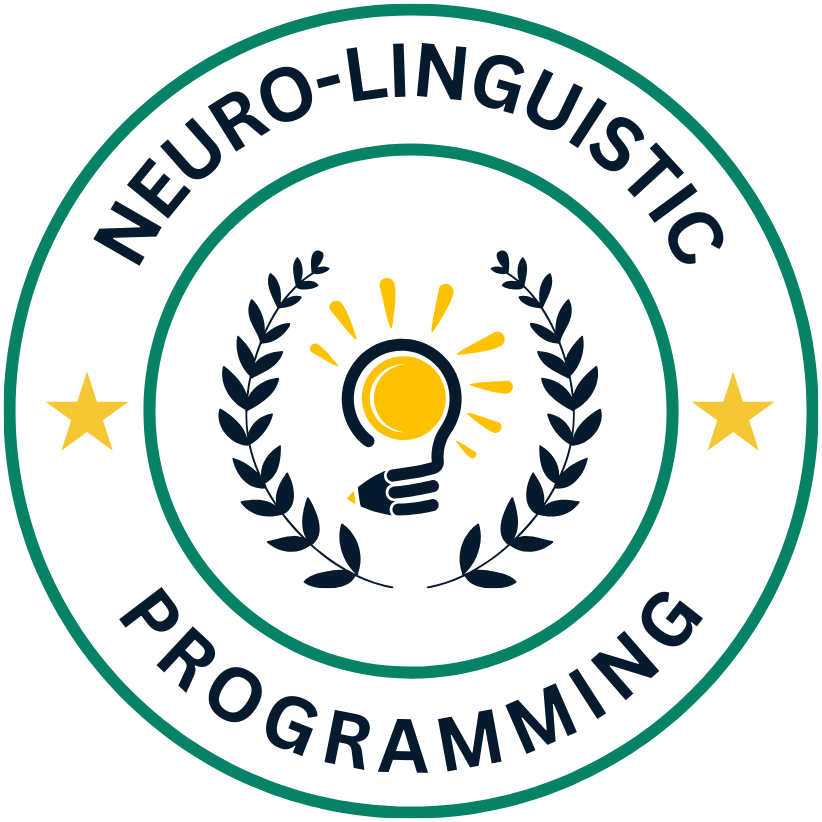Over time, organizations have discovered that motivating and retaining top talent requires more than just competitive salaries and benefits; it necessitates understanding the intricacies of human behavior. By harnessing the power of Neuro-Linguistic Programming (NLP), you can unlock strategies to enhance communication, build rapport, and create an environment where your employees feel valued and inspired. This blog post will explore practical applications of NLP that can significantly boost your talent retention efforts and cultivate a motivated workforce.
Understanding NLP: A Framework for Motivation
Before you can truly harness the power of NLP for motivating and retaining your top talent, it is vital to understand what NLP is and why it holds significant importance in the field of talent management. NLP, or Neuro-Linguistic Programming, is a psychological approach that explores the connection between neurological processes, language, and behavioral patterns. It posits that these elements can be manipulated to improve flexibility, creativity, and productivity in both individuals and teams. By understanding NLP, you can begin to identify the underlying motivations that drive your employees and create a work environment tailored to their needs and aspirations.
Defining NLP and Its Importance
On a foundational level, NLP provides a framework for understanding how language influences thought and behavior. By recognizing the patterns and structures of communication, you can facilitate more effective interactions with your employees. This insight is crucial for fostering a supportive workplace culture where individuals feel valued, understood, and motivated to contribute at their highest potential. With the right application of NLP techniques, you can enhance employee engagement and satisfaction, leading to improved retention rates.
Key Techniques and Applications in Talent Management
An effective application of NLP in talent management encompasses a range of techniques designed to enhance motivation and foster a collaborative workplace environment. Techniques such as anchoring, reframing, and eliciting values can be pivotal in aligning your employees’ personal aspirations with your organization’s goals. Anchoring, for example, involves creating a mental association with a positive experience that can be triggered in challenging situations, while reframing helps individuals view obstacles as opportunities for growth.
Frameworks for implementing these NLP techniques can be incorporated into your talent management strategy through training programs, workshops, and one-on-one coaching sessions. By introducing your team members to concepts like visualization and goal-setting frameworks based on NLP principles, you can empower them to take ownership of their professional development journeys. Furthermore, embracing these techniques can cultivate a culture of open communication and trust, vital for maintaining high morale and motivation across your workforce.
The Role of NLP in Employee Engagement
You may be wondering how Natural Language Processing (NLP) can enhance employee engagement within your organization. By intelligently analyzing communication patterns and sentiment, NLP tools can offer insights into employee sentiments and highlight areas that need improvement. This technology doesn’t just process data; it can transform how you understand and engage with your workforce. You can create tailored strategies that resonate with your employees, ultimately fostering a more invested and motivated team.
Enhancing Communication and Feedback
The cornerstone of effective employee engagement lies in open and transparent communication. NLP can analyze written and spoken language to identify trends in how your employees express themselves. By summarizing feedback and gauging sentiment, you can develop a clearer picture of your team’s morale and challenges. Implementing these insights into your communication strategies ensures that your employees feel heard and valued. This proactive approach not only strengthens relationships but also increases retention rates.
Creating a Supportive Work Environment
Between understanding employee concerns and fostering collaboration, NLP can significantly enhance your organizational culture. The analysis of language can provide insights into team dynamics, enabling you to implement actionable strategies that nurture a supportive atmosphere. By recognizing the underlying sentiments in your team’s communication, you have the opportunity to address issues directly and encourage positive interactions within your workforce. This attentiveness lays the foundation for an environment where employees feel safe and motivated.
Creating a supportive work environment goes beyond addressing concerns; it involves cultivating an atmosphere where employees can thrive. By utilizing NLP to analyze communication patterns, you can identify what motivates your team and respond to their needs in real time. Initiatives like wellness programs, team-building activities, and flexible working arrangements can be informed by these insights, allowing you to foster not just a workplace, but a community where employees feel supported and engaged in their roles.
NLP Strategies for Performance Improvement
Clearly, incorporating NLP strategies into your performance improvement initiatives can lead to remarkable changes in how you and your team approach challenges. By understanding and leveraging the principles of NLP, you can create a supportive environment that encourages continuous growth and development. This not only enhances individual performance but also contributes to the overall success of your organization by aligning personal goals with collective objectives.
Goal Setting and Achievement Techniques
After establishing a foundation in NLP, it’s imperative to employ effective goal-setting techniques that enhance motivation and drive performance. By using SMART criteria—specific, measurable, achievable, relevant, and time-bound—you can create clear milestones that guide you toward success. Additionally, visualizing your goals can serve as a powerful tool; envisioning your desired outcome in vivid detail can help solidify your commitment and inspire you to take consistent action.
Overcoming Barriers to Performance
One of the most significant challenges you might face in performance improvement is overcoming mental and emotional barriers. These obstacles can stem from limiting beliefs, past experiences, or even fear of failure. By leveraging NLP techniques such as reframing and anchoring, you can shift your perspective and develop more empowering beliefs that propel you forward. This process involves identifying negative thought patterns and actively restructuring them into positive affirmations that support your objectives.
The ability to recognize and dismantle these barriers is vital for sustaining long-term performance. You can utilize techniques such as sensory acuity to become more aware of your emotional responses or triggers, enabling you to manage them more effectively. Additionally, engaging in regular reflection can help you identify areas where your mindset may hinder progress, allowing you to course-correct and maintain focus on your goals. By taking these proactive measures, you ensure that performance improvement remains consistent and achievable.
Retention Through Personal Development
Unlike conventional approaches to employee retention that focus solely on financial incentives or benefits packages, fostering personal development can create a more sustainable and engaged workforce. By implementing strategies to enhance employees’ skills and align their career aspirations with organizational goals, you can cultivate a sense of loyalty and motivation that goes beyond monetary compensation. Exploring opportunities in personal development offers the potential for transformative experiences, such as those found in Harnessing the Power of NLP for Personal Transformation, where the frameworks and techniques of NLP can be applied effectively to nurture talent within your organization.
Identifying Employee Strengths and Aspirations
Development begins with understanding the individual strengths and aspirations of your employees. By engaging in meaningful conversations, assessments, or workshops, you can uncover the unique talents that each person brings to the team. This process is necessary because when employees feel seen and valued for their skills, it opens up avenues for growth and development that align with their personal career goals. Utilizing NLP techniques can aid in recognizing unexpressed aspirations, allowing you to facilitate a more personalized approach to employee engagement.
Tailoring Career Pathways Using NLP
Beside fostering awareness of strengths, tailoring career pathways using NLP can significantly enhance employee satisfaction and retention. You can utilize NLP strategies to map out personalized career trajectories that resonate with both the organization’s needs and the individual’s goals. This collaboration between employee and employer creates a dynamic environment where both parties thrive. By integrating coaching and conversational techniques rooted in NLP, you can ensure that your team’s career growth aligns harmoniously with their intrinsic motivations.
Strengths development within your workforce can form a strong foundation for career pathway tailoring because it creates a deep understanding of what each employee genuinely enjoys and excels at. When you effectively identify and nurture these strengths, you empower your employees to pursue roles and projects that not only enhance their skills but also ignite their passions. This personalized approach fosters an environment where your top talent feels motivated to build their careers within your organization, leading to improved retention and overall organizational success.

Measuring the Impact of NLP on Talent Retention
Not only does the implementation of NLP techniques enhance employee engagement, but actively measuring its impact on talent retention is imperative for assessing the effectiveness of your strategies. By identifying the right metrics, you can tailor your approach to build a work environment that nurtures top talent. This involves establishing Key Performance Indicators (KPIs) that reflect both qualitative and quantitative aspects of employee satisfaction and retention.
Key Performance Indicators
One way to measure the impact of NLP on talent retention is through specific KPIs. These metrics can include employee turnover rates, engagement scores, and satisfaction ratings derived from regular employee feedback. By tracking these indicators over time, you can gain insight into how effectively your NLP strategies are being adopted and their correlation with employee retention. Additionally, consider using exit interview data to understand what employees value and what drives their decision to stay or leave your organization.
Success Stories and Case Studies
An effective way to illustrate the impact of NLP on talent retention is through real-world success stories. Organizations that have integrated NLP techniques into their talent management processes have reported significant improvements in employee retention rates. Below are several compelling case studies that demonstrate the positive outcomes achieved through NLP applications:
- Company A: Implemented NLP-based coaching techniques, resulting in a 20% increase in employee retention over two years.
- Company B: Leveraged NLP strategies in their onboarding process, which improved new hire retention rates by 35% after the first year.
- Company C: Utilized NLP-driven communication training, leading to a 45% reduction in voluntary turnovers within six months.
- Company D: Employed NLP frameworks to enhance conflict resolution among teams, achieving an 18% increase in overall job satisfaction ratings.
Success stories such as these highlight the tangible benefits of adopting NLP strategies in your organization. Your ability to analyze these insights and incorporate them into your overall talent management plan can lead to significantly better retention outcomes. By studying the quantitative data and qualitative feedback from these successful case studies, you can adapt and implement your own effective NLP initiatives tailored to your workplace culture.
Challenges and Considerations in Implementing NLP
Now that you are aware of the potential benefits of implementing Natural Language Processing (NLP) in your organization, it’s important to acknowledge the challenges that may arise during this process. Incorporating NLP technologies can be complex, requiring significant resources, training, and a supportive organizational culture to ensure success. Additionally, there may be resistance from employees who are accustomed to traditional methods, which can lead to a lack of buy-in and stifle the positive impact of NLP initiatives.
Common Obstacles
The integration of NLP often encounters several common obstacles. One major challenge is the need for high-quality data; without accurate and comprehensive data sets, NLP algorithms cannot yield effective results. Furthermore, technical integration issues may surface, particularly if the existing software systems are not compatible with the new NLP technologies you plan to adopt. Lastly, securing adequate leadership support and alignment around NLP objectives can sometimes be difficult, as different stakeholders may have varying perceptions of the value it brings to the organization.
Best Practices for Successful Integration
Across successful organizations that have embraced NLP, a set of best practices emerges that significantly enhances the likelihood of positive results. Establishing clear objectives is key, as this guides your initiatives and helps you measure progress. Engaging employees throughout the adoption process—including training and education about the technology—can alleviate fears and foster a supportive environment. Additionally, created pilot programs allow you to test NLP applications on a smaller scale, identifying potential issues before rolling out more extensive implementations.
Understanding the importance of a phased approach can make a significant difference in your NLP implementation journey. By breaking down the integration process into manageable steps, you not only reduce complexities but also allow for incremental learning and adaptation. This iterative process helps you address any unforeseen challenges that arise, while keeping your team engaged and invested in the project. As you prioritize clear communication and training, you will cultivate an environment where your teams feel empowered to leverage NLP tools effectively, ultimately leading to heightened motivation and retention of your top talent.
Conclusion
With these considerations, you have the opportunity to harness the power of Natural Language Processing (NLP) to elevate your talent management strategies. By effectively utilizing NLP, you can gain insights into employee sentiment, streamline the recruitment process, and enhance communication across your organization. This technology can help you identify the unique motivations of your team members, allowing you to tailor your approach to meet their needs and aspirations more closely. Engaging with your workforce through these insights not only fosters a positive work environment but also facilitates the retention of top talent by aligning your organizational goals with the individual goals of your employees.
As you implement NLP into your strategies, it is crucial to pursue continuous learning and adaptation. By staying informed about the latest advancements in this field and remaining responsive to the feedback you gather through NLP tools, you can create a dynamic workplace that promotes engagement and loyalty. Investing in your people through personalized development experiences not only attracts high-performing individuals but also cultivates a culture of motivation that retains them long-term. By prioritizing NLP in your talent management practices, you set the stage for sustained organizational success and leadership in your industry.
Q: What is NLP and how can it be applied to motivate employees?
A: NLP, or Neuro-Linguistic Programming, is a psychological approach that focuses on the connections between neurological processes, language, and behavioral patterns. In the context of motivating employees, NLP techniques can be utilized to enhance communication, build rapport, and foster a positive work environment. By understanding how individuals process information and respond to different stimuli, leaders can tailor their motivational strategies to resonate more effectively with each team member, ultimately leading to increased engagement and job satisfaction.
Q: How can organizations use NLP to improve employee retention?
A: Organizations can leverage NLP by employing strategies that focus on understanding employee motivations and aligning them with organizational goals. For instance, using NLP techniques like anchoring and reframing can assist in changing negative perceptions about the workplace. By facilitating open communication and active listening, leaders can identify and address concerns that may lead to turnover. Additionally, providing personalized feedback and recognition based on NLP principles can make employees feel valued, thus increasing their likelihood of staying with the company long-term.
Q: What are some practical NLP techniques that can be implemented in the workplace?
A: There are several NLP techniques that organizations can implement to enhance motivation and retention. One example is the technique of mirroring, where leaders subtly mimic the body language of their employees to create rapport. Another technique is the use of positive language; framing feedback and discussions in a constructive manner can influence employees’ mindset towards challenges and opportunities. Furthermore, goal-setting through NLP practices encourages individuals to visualize success, enhancing their commitment to achieving both personal and organizational objectives. These techniques not only foster a supportive work culture but also empower employees to perform at their best.



